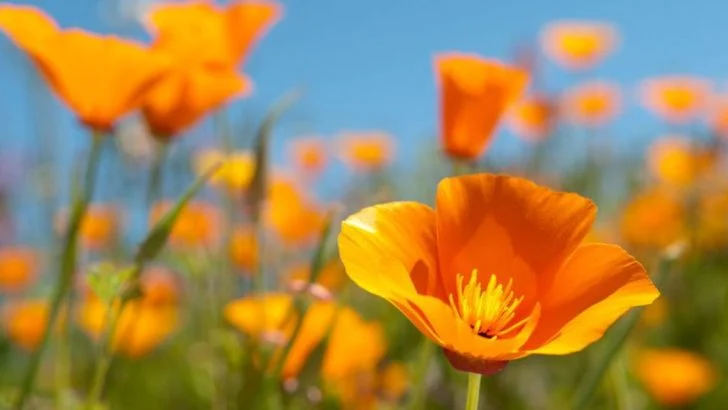Harsh winds don’t have to ruin your garden. Whether you live on a blustery mountain slope or along a breezy coastal bluff, there are resilient plants that not only survive gusty conditions—but thrive in them.
These wind-tolerant plants have tough stems, flexible foliage, and deep root systems, making them ideal for withstanding everything from salt-laden sea breezes to alpine drafts. Some are even evergreens that act as natural windbreaks, while others bring seasonal color and texture without getting torn to shreds.
Sea Holly
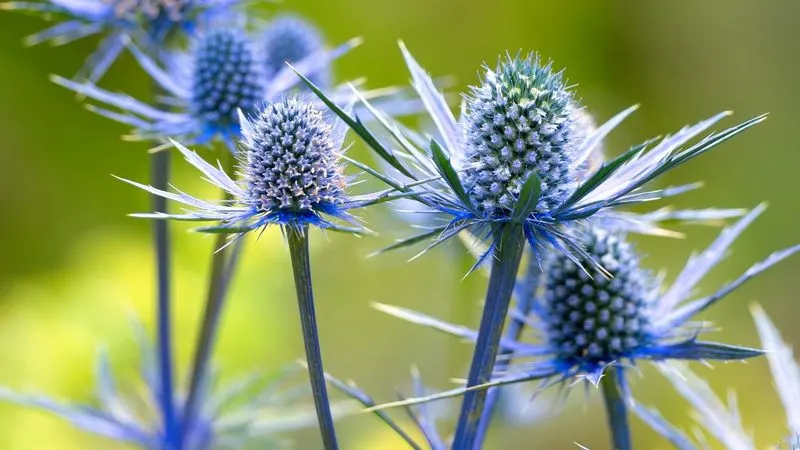
With its striking steely-blue flowers and spiky leaves, Sea Holly adds an architectural flair to any landscape. This perennial plant thrives in well-drained soil and can withstand strong winds with ease. Its unique appearance is not just a visual delight; it’s a favorite among pollinators, attracting bees and butterflies alike. The plant’s ability to survive in poor soil conditions makes it a versatile choice for both mountain and coastal gardens. Sea Holly is truly an exceptional plant that stands out in any garden setting.
New Zealand Flax
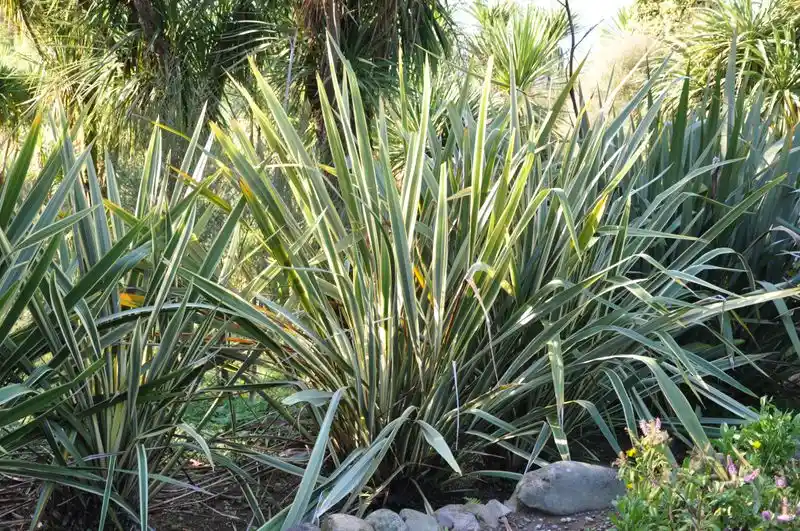
Known for its robust, sword-like leaves, New Zealand Flax is a favorite for adding texture to gardens. Its upright form and striking colors range from deep red to bright green, providing year-round interest. The plant’s tough nature allows it to thrive in harsh winds, making it perfect for coastal areas. Whether planted as a focal point or part of a mixed border, New Zealand Flax brings a dynamic element to any outdoor space. Few plants offer such visual drama while being so easy to care for.
Beach Rose
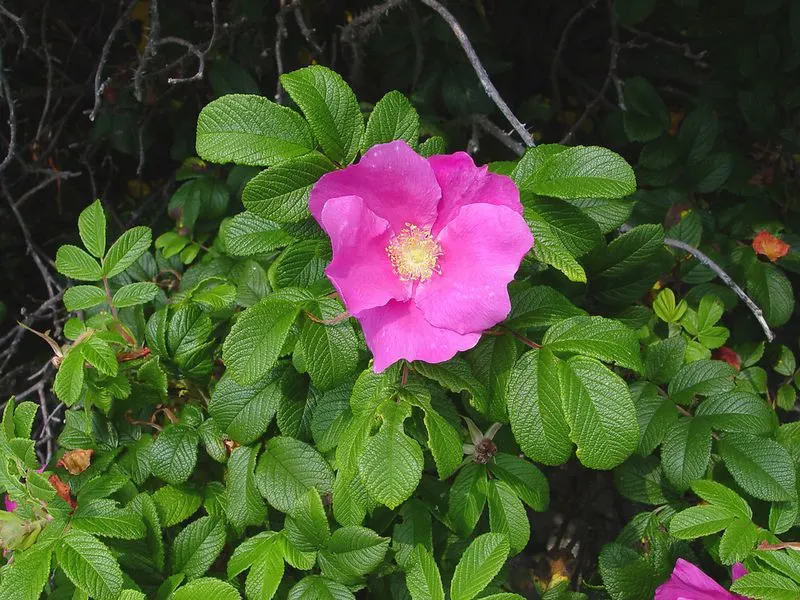
Famous for its fragrant pink and white blooms, Beach Rose is a resilient shrub that thrives in sandy soils and salty air. This plant forms dense thickets, providing excellent windbreaks and habitat for wildlife. Its vibrant flowers give way to bright red hips, offering visual interest well into the fall. Beach Rose is not only beautiful but also incredibly tough, making it a perfect choice for coastal gardens that need to endure strong winds and challenging conditions.
Creeping Juniper
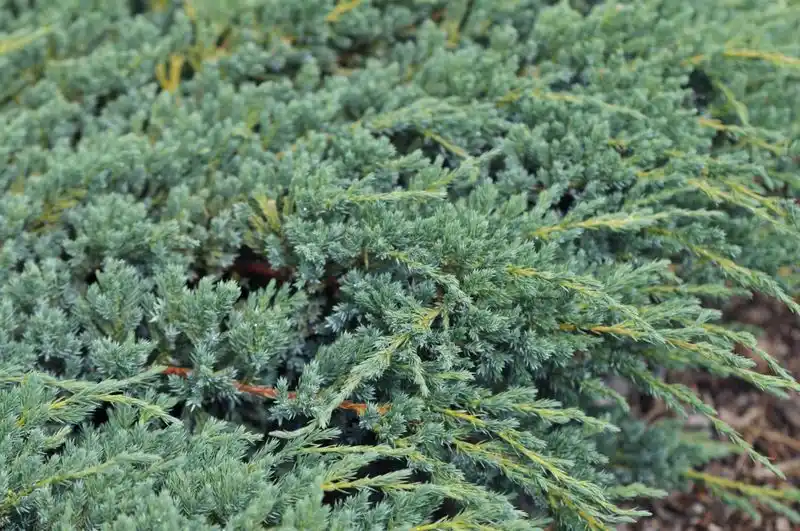
This low-growing evergreen shrub is perfect for covering ground in windy, exposed areas. Creeping Juniper’s sprawling branches create a dense mat that can stabilize slopes and prevent erosion. Its hardy nature allows it to thrive in rocky soils, making it ideal for mountainous regions. The plant’s blue-green foliage adds a splash of color and texture, even in the harshest weather conditions. It’s a fantastic choice for those looking to combine functionality with beauty in their gardens.
Lavender
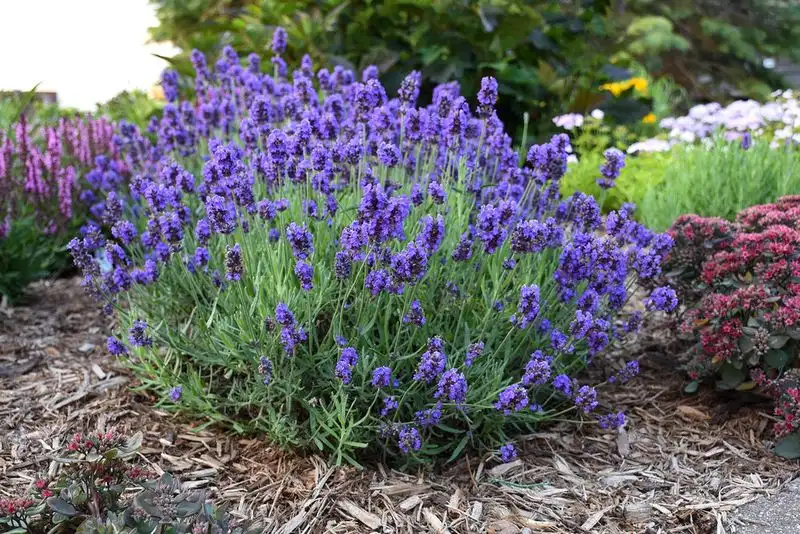
Renowned for its soothing fragrance and vibrant purple flowers, Lavender is a cherished plant worldwide. It thrives in sunny locations with well-drained soil, perfectly suited for windy hillsides. The plant’s aromatic oils not only deter pests but also attract beneficial insects. Lavender’s drought-tolerant nature makes it an excellent choice for areas with challenging weather. Whether used in borders or containers, its calming presence enhances any garden, providing a sensory delight with every breeze.
Rockrose

Despite its delicate appearance, Rockrose is a tough-as-nails shrub that thrives in poor, sandy soils. Its papery pink or white flowers bloom profusely, bringing color to barren landscapes. Rockrose excels in both coastal and mountain settings, resisting drought and windy conditions with ease. This evergreen plant requires minimal maintenance and offers year-round greenery. Rockrose’s adaptability and beauty make it a valuable addition to any garden facing environmental challenges.
Scotch Broom
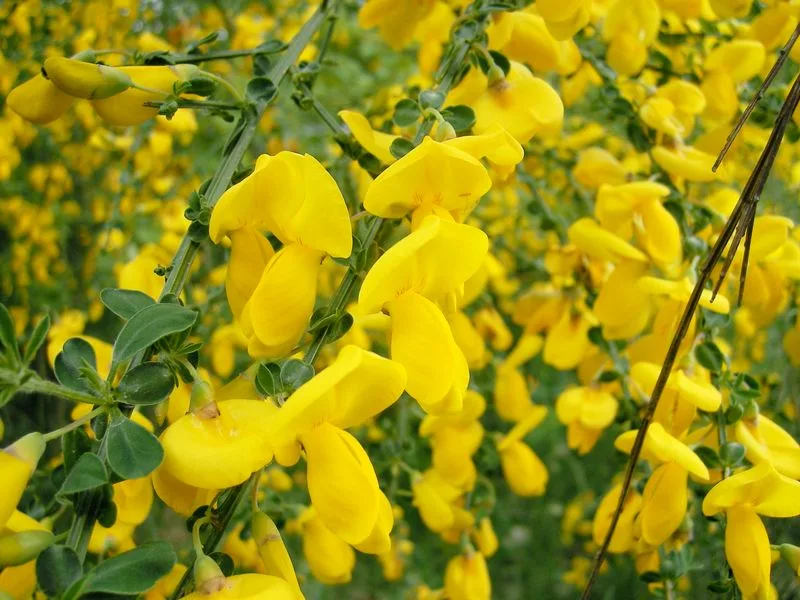
Sporting vibrant yellow flowers, Scotch Broom is a hardy shrub that can handle the toughest of environments. It thrives in poor soils, making it an excellent choice for erosion control on slopes. This plant’s ability to fix nitrogen in the soil benefits neighboring plants, encouraging a healthier ecosystem. Its resilience against harsh winds makes it a reliable option for exposed areas. Scotch Broom’s cheerful blooms bring life to otherwise challenging landscapes, proving that beauty can flourish against the odds.
Yucca
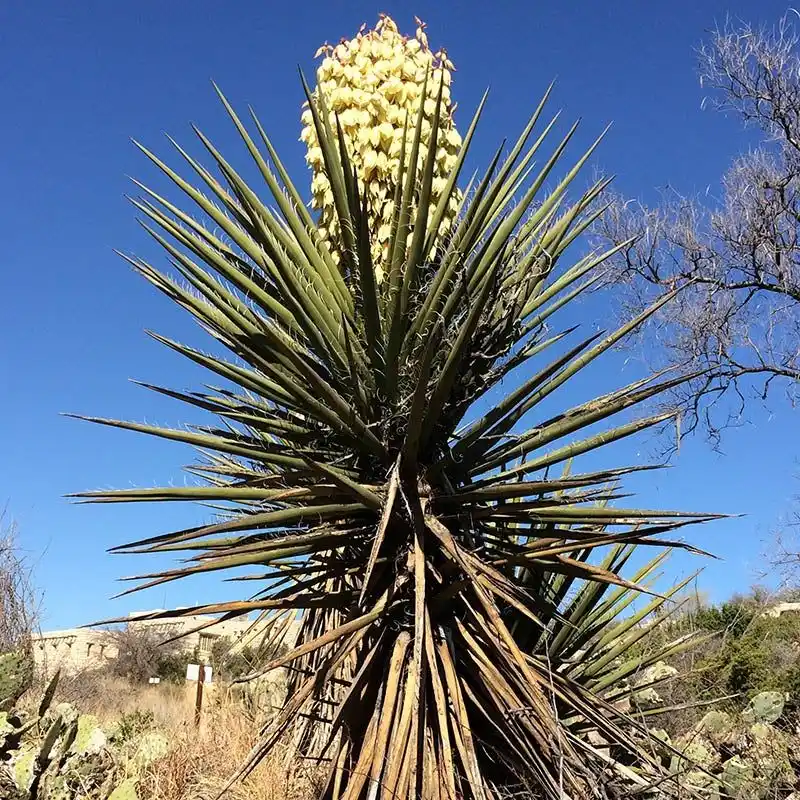
Yucca’s dramatic, spiky foliage and towering flower spikes make it a standout in any landscape. This resilient plant thrives in dry, windy conditions, reminiscent of its desert origins. Yucca’s architectural form adds vertical interest, making it ideal for focal points in gardens. Its ability to withstand drought and poor soils ensures it remains a low-maintenance choice. The plant’s striking appearance and hardiness make it a favorite for those looking to add a touch of the exotic to their outdoor spaces.
Catmint
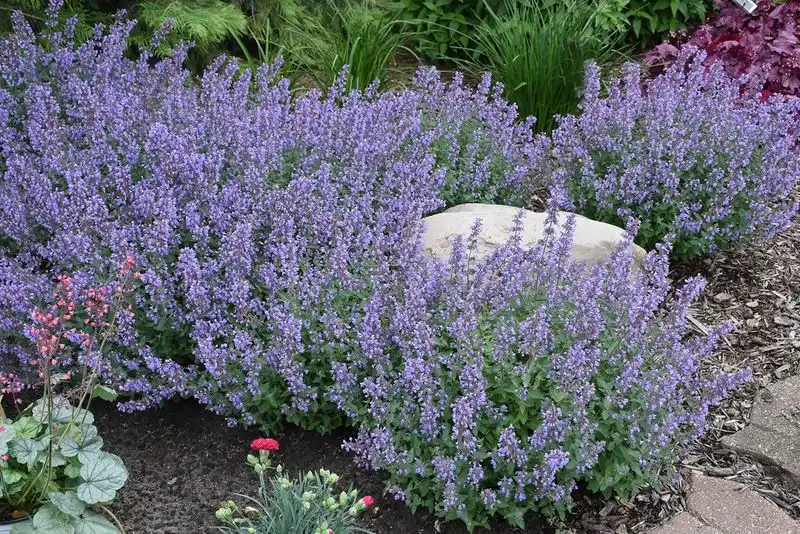
Catmint is celebrated for its long blooming season and grey-green foliage. This herbaceous perennial is tough enough to thrive in windy conditions, providing waves of lavender-blue flowers from spring to fall. It’s not just a feast for the eyes; bees and butterflies adore its nectar-rich blooms. Catmint’s aromatic leaves deter pests, making it a practical choice for gardeners seeking low-maintenance beauty. Whether used as ground cover or in borders, its soft texture and color offer a calming effect in any garden.
Heath
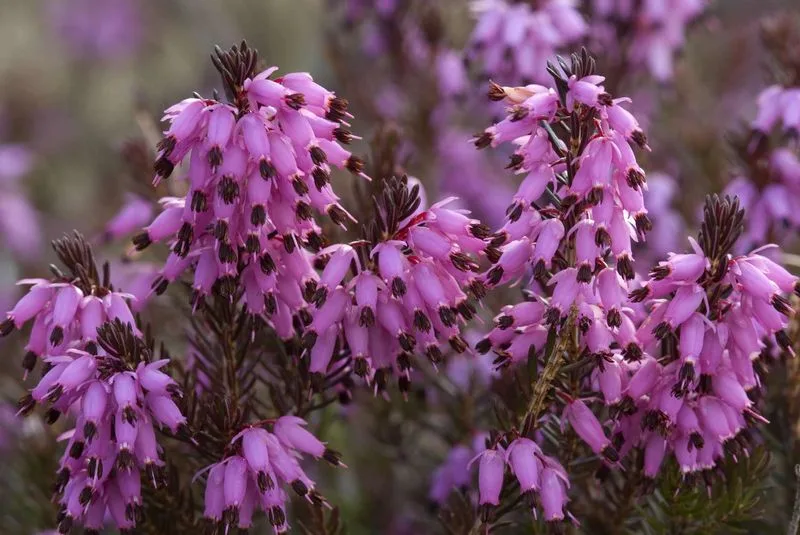
Heath plants bring year-round interest with their evergreen foliage and dainty, bell-shaped flowers. These resilient shrubs are particularly suited to windy, coastal areas, where they thrive in acidic, well-drained soils. Heath’s ability to withstand exposure to salty air makes it a reliable choice for challenging environments. The plant’s flowers vary in color from white to deep pink, brightening up landscapes even in the dullest weather. Heath is a fantastic choice for gardeners looking to add texture and color to exposed sites.
Sedum
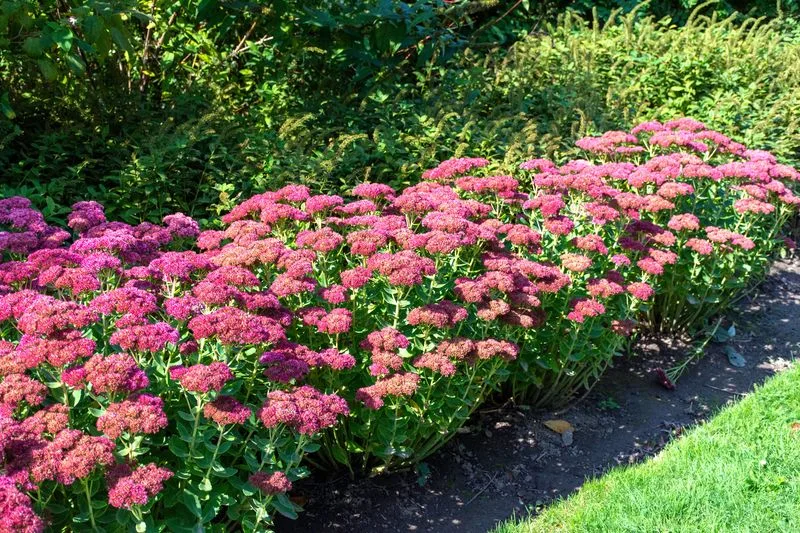
Sedum, often known as stonecrop, is a versatile succulent that excels in rocky, windy environments. Its fleshy leaves store water, allowing it to withstand periods of drought. The plant produces clusters of star-shaped flowers that add vibrant color to gardens. Sedum’s low-growing habit makes it ideal for ground cover or rock gardens, where it can spread and thrive with minimal care. Its tolerance for poor soils and exposure to the elements makes it a resilient choice for both coastal and mountainous gardens.
Bayberry
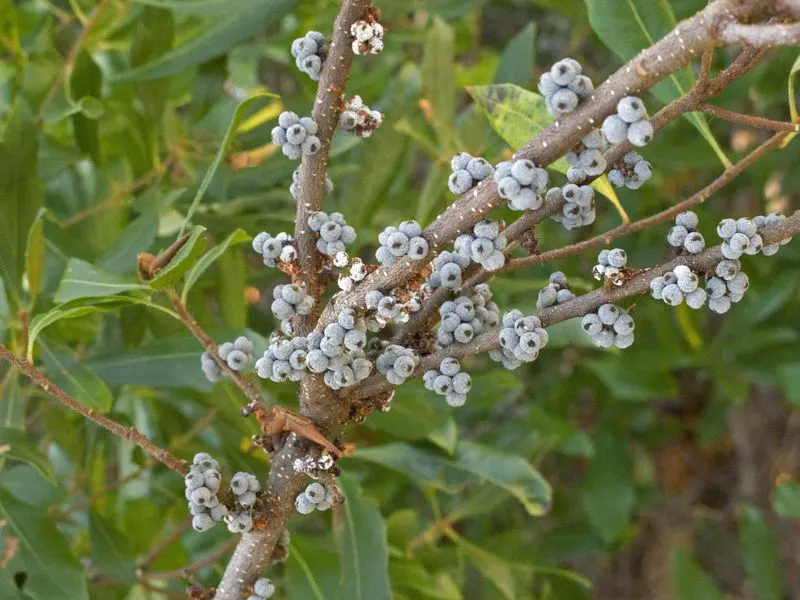
Bayberry is a hardy shrub known for its aromatic, waxy leaves and small, berry-like fruits. Ideal for coastal gardens, it thrives in sandy soils and offers excellent wind resistance. Bayberry’s dense foliage provides habitat for wildlife, while its roots help stabilize soil, making it valuable for erosion control. The plant’s understated beauty and tough nature make it a practical and attractive choice for exposed gardens. Its berries can even be used to make fragrant candles, adding an extra dimension to its appeal.
Eucalyptus

Eucalyptus trees are renowned for their aromatic leaves and striking silver-blue foliage. These fast-growing trees are well-suited to windy conditions, thriving in a wide range of soils. Eucalyptus’s adaptability makes it a popular choice for shelter belts and windbreaks. Its exfoliating bark and unique leaf shape add visual interest to landscapes. Beyond its beauty, Eucalyptus provides valuable essential oils and can be used for timber. The tree’s resilience and multifunctional properties make it a cornerstone in gardens facing challenging weather conditions.
Thyme
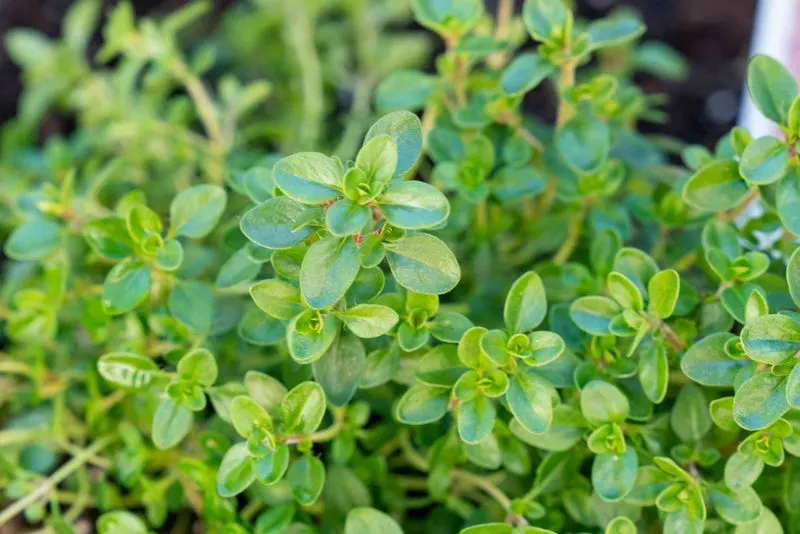
Thyme is a culinary favorite with its small, aromatic leaves and delicate pink flowers. This hardy herb thrives in sunny, well-drained locations, enduring wind with ease. Thyme’s low-growing nature makes it perfect for ground cover, adding fragrance and flavor to gardens. It’s drought-tolerant, requiring minimal care, and attracts beneficial insects with its blooms. Thyme’s versatility extends beyond the kitchen, offering a practical and aromatic solution for gardeners seeking to enhance their outdoor spaces with minimal effort.
Oleander
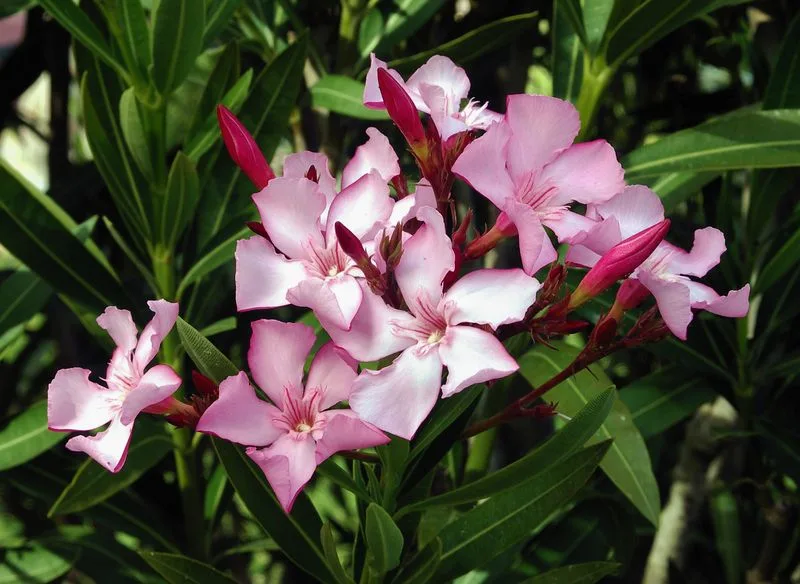
Oleander is a striking shrub known for its vibrant, funnel-shaped flowers and glossy, dark green leaves. This hardy plant thrives in windy coastal environments, where its resilience is unmatched. Oleander’s long blooming period offers continuous color, with flowers in shades ranging from white to deep pink. Its ability to withstand drought and salt spray makes it a valuable addition to coastal gardens. While beautiful, Oleander is toxic, so care should be taken when planting near children or pets.
Agave
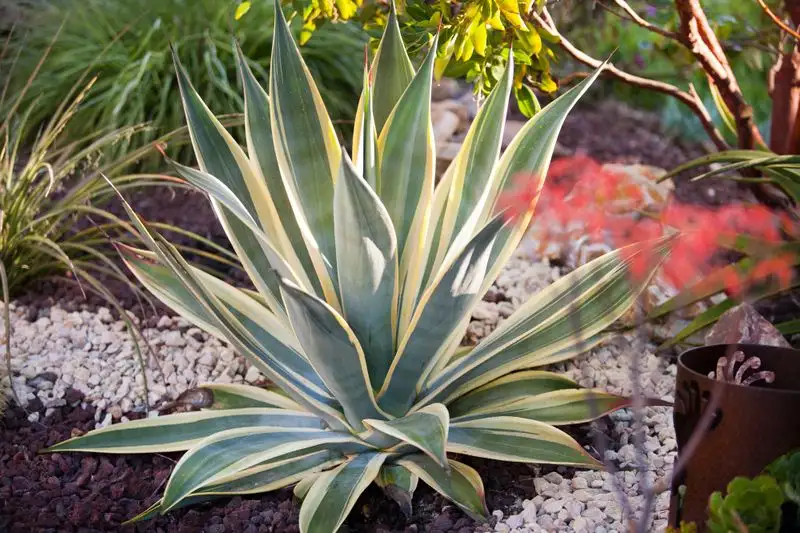
Agave’s dramatic rosette of thick, fleshy leaves makes it a standout choice for arid, windy locations. This succulent thrives in poor soils and requires minimal water, reflecting its desert origins. Agave’s unique form adds architectural interest and texture to gardens, making it an excellent focal point. Its resilience against harsh weather ensures it remains a low-maintenance option for those seeking a bold statement plant. Agave’s versatility and striking appearance have made it a staple in both coastal and mountainous gardens.
Broom
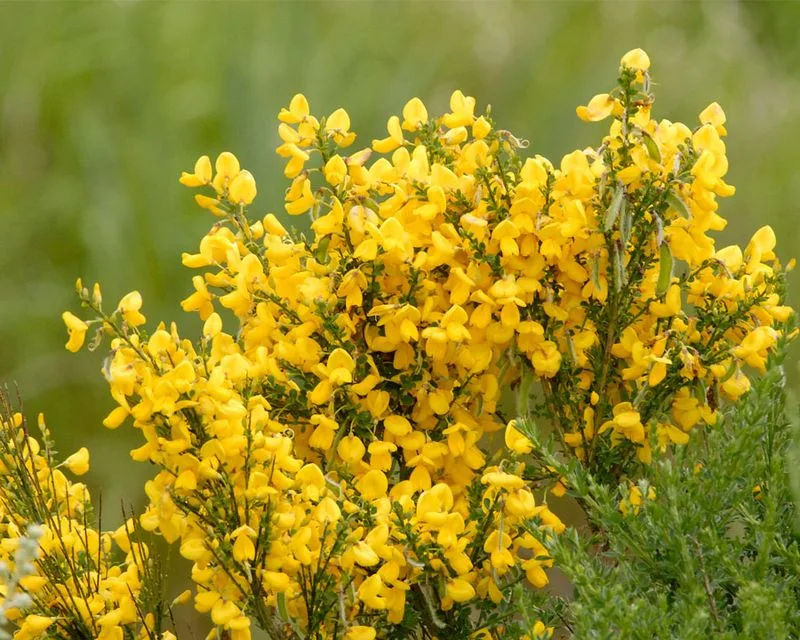
The Broom shrub is renowned for its vivid yellow flowers and ability to thrive in challenging conditions. It is particularly suited to windy hillsides, where it stabilizes the soil and prevents erosion. Broom’s fast growth and nitrogen-fixing properties enhance soil fertility, benefiting surrounding plants. Its cheerful blooms bring color to landscapes, making it a valued addition to gardens in need of hardy, attractive plants. Broom’s resilience and low-maintenance nature ensure it remains a favorite among gardeners seeking beauty and practicality.
Russian Sage
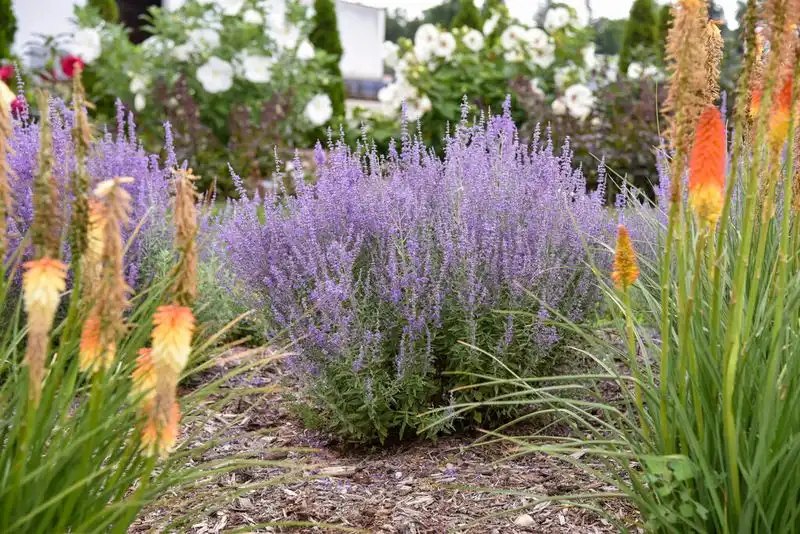
Russian Sage is celebrated for its silvery, aromatic foliage and tall spikes of lavender flowers. This hardy perennial thrives in windy, sunny locations, providing long-lasting color from midsummer to fall. Its drought-tolerant nature makes it an ideal choice for gardens with challenging weather conditions. Russian Sage’s delicate appearance belies its toughness, and it serves as a haven for pollinators. The plant’s aromatic leaves and airy structure add a touch of elegance to any garden setting.
Pampas Grass

With its towering plumes and graceful arching leaves, Pampas Grass makes a bold statement in any landscape. This ornamental grass thrives in windy, open fields, where its feathery blooms sway gently in the breeze. Pampas Grass’s ability to grow in various soil types and its tolerance to drought make it a versatile choice for large gardens. Its dramatic presence and low-maintenance requirements have cemented its status as a favorite among gardeners looking to add movement and texture to their outdoor spaces.
Californian Poppy
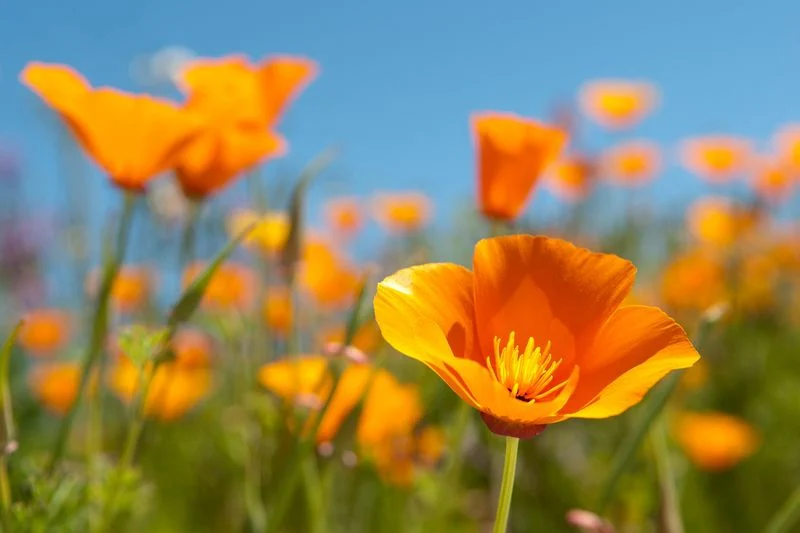
The Californian Poppy is celebrated for its vibrant orange flowers and fern-like foliage, which bring a burst of color to any garden. This annual plant is well-suited to windy conditions and thrives in full sun with well-drained soil. Its cheerful blooms open each morning with the sun, creating a lively display throughout the growing season. The Californian Poppy’s resilience and ease of growth make it a popular choice for gardeners seeking to add a touch of sunshine to their landscapes with minimal effort.
Kaleidoscope Flower
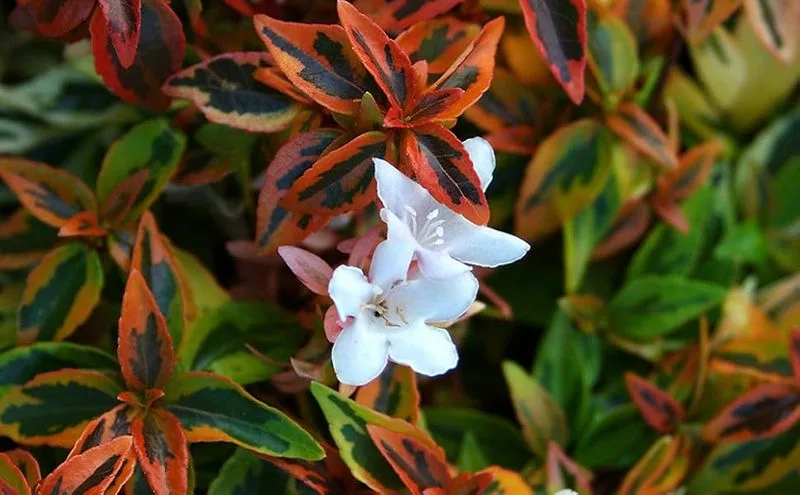
Imagine a flower that dances gracefully in the breeze, its petals a swirl of blue, purple, and gold. The Kaleidoscope Flower isn’t just a feast for the eyes; it’s a marvel of nature’s resilience. These unique blooms thrive in harsh winds, their flexible stems bending without breaking. As you walk through a garden or a wild expanse, the Kaleidoscope Flower catches your attention with its vibrant hues and hypnotic patterns. Plant it in your garden to enjoy its beauty and adaptability. Care tip: Ensure it receives plenty of sunlight, but it can handle a bit of shade too.

